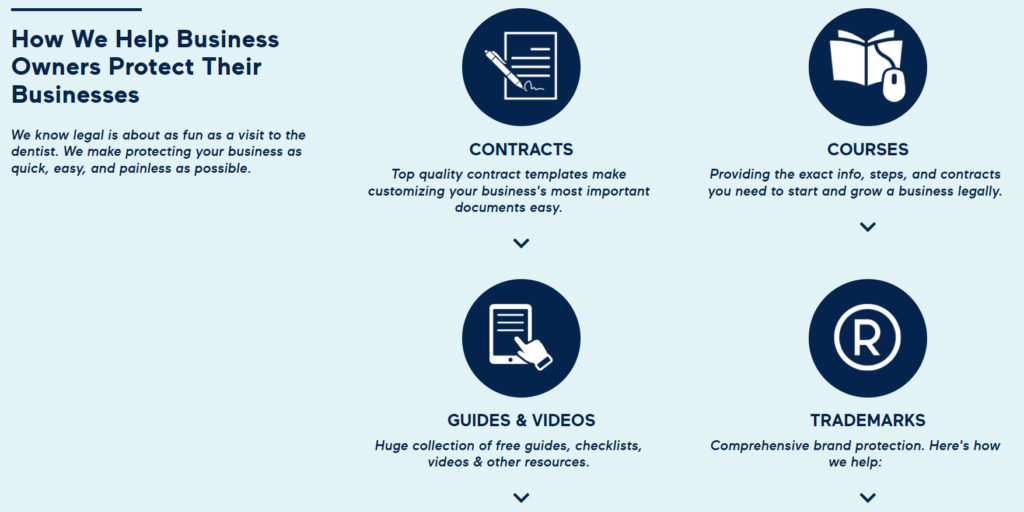Does your ideal customer visit your website and yet do nothing once they’ve landed there?
I’m talking – don’t fill out a single form, schedule a call, or even make it off of your homepage.
If you feel like your website does nothing for your business, it’s because you’re not actually telling the people who visit your website how to work with you.
Here’s the harsh truth – when someone lands on your little corner of the internet, they have to know exactly what you do, how you can help them solve a problem, and the biggie – how to work with your business to solve that problem.
Without those key things, your website is just an online brochure that no one will do anything but glance at.
Today, we’re going to learn the lead generation strategies that keep customers on your website and actually get them to take action.
Generate Leads by Being Clear
The only way to generate leads on a website is to be 100% clear with your visitors what you want them to do.
We have mere seconds to grab someone’s attention so they’ll give us even just a couple of minutes of their time.
If you don’t want them to bounce off your website and go straight to a competitors’, you need to give them a bit of a reason why they need to keep digging.
Clarity and communication online is as important as it is in the real world. Frankly, a bit more so because we just have these few words to capture their attention.
Make it super simple for your visitors and be 100% clear with what you want.
It’s not even a terribly complicated process. In fact, your website’s homepage just needs a few key lead generation strategies to keep people engaged and clicking so they’ll actually take action and become a lead.
1. Headlines Must Demonstrate You Solve a Problem
Remember how I said you had mere seconds to get someone’s attention? This is how you do it.
Your headlines – especially the main one on your homepage – needs to immediately grab attention and showcase that you can help.
In your online business, you probably solve a few problems. Pick the biggest one you solve, the harshest pain point (or two) and show that you can help them with that.
Depending on your service, you might help your clients “Build freedom,” “Change their mindset,” “Streamline,” or “Reduce the Overwhelm.”
Demonstrate the transformation that comes from working with you and how that solves their biggest issue.
Continue that same mindset throughout your website in all of your headlines. When your visitors feel like you understand them and their issues, they’re far more likely to become customers.
2. Funnel Them Towards Your Services
Tell your visitors exactly where you want them to go next by taking them straight there.
Most websites should have funnels to your main services near the top of the screen, just under the main introductory piece.
You want your visitors to get there quickly and know that not only do you understand their problems, you help them solve those problems with your offers.
Take a look at this example from my client Solivagant Legal. She has a few ways customers can work with her, but we picked the top 4 she wanted to promote, provided problem-solving copy in the descriptions, and then linked them to the places her visitors can learn more and buy from her.

If you have a lot of offerings, I’d typically recommend just using your top 3-4 max services as your funnels. You can easily create decision overwhelm and prevent someone from clicking.
3. Introduce Your Story and Expertise
The internet has made the world a smaller place, and we want to get to know the people that we’re working with.
Especially when you’re running an online business, you have to give your potential clients the ability to know you and your brand before they’re going to be comfortable handing over thousands of dollars.
They can’t, after all, meet you for a coffee at a local cafe to feel your vibe.
Your homepage should always introduce you and your business and provide a bit of context for why you do what you do. Tell a bit of your story and how it connects to your services, then direct them with a link to your About page so they can get to know more.
4. Reinforce Everything with Social Proof
If you’re like me, you were raised when Google and Wikipedia were brand new and we had to be reminded over and over again in school that just because it’s on the internet doesn’t mean it’s true.
(Man, I wish more people remembered that….)
Our potential customers care that you’ve helped someone else like them solve their problems. So show them!
Utilize testimonials, case studies, portfolio pieces, or even media mentions to lend credibility to your claims.
You’re basically just reinforcing you can do what you say you can because you’ve helped someone else do just that.
5. Have Clear Calls to Action
It’s amazing to me how often this gets forgotten, but when someone actually makes it through your homepage and hasn’t gone hunting for someone else – now what?
What do you want potential customers to do once they’ve decided they want to know more? Do you want them to call? Email?
You have to tell them!
You need calls to action throughout your website that very clearly direct your visitors to do whatever it is you want them to in order to work with you. The language in your call to action should be clear and tell them exactly “what now.”
Leads Grow Your Business
You know that your online business cannot survive without a steady stream of leads. So make sure you capture them with these lead generation strategies.
Don’t let someone fall through the cracks because your website is not set up to guide someone through the journey of working with you.
You can have the best service in the world and no bookings because you’re missing these five key pieces.
Want to know exactly how to incorporate them into your website? My website and marketing audit will help you unpack exactly what your website is missing. Schedule a quick 15 minute call to see how that audit process works!



